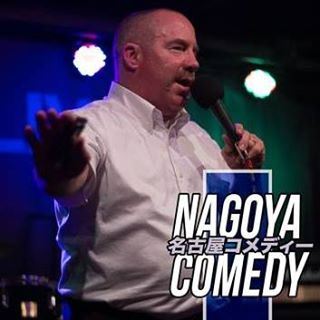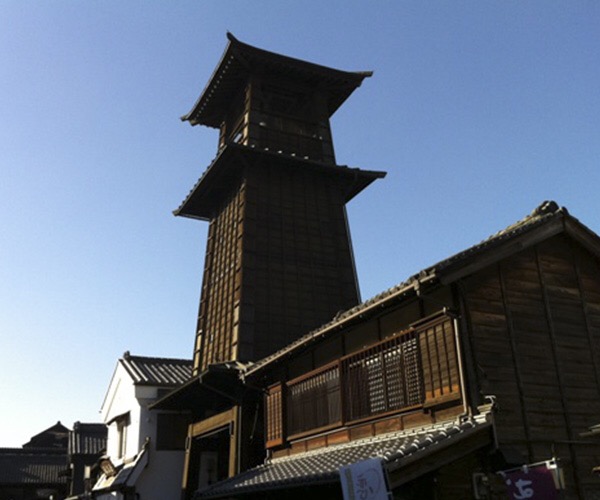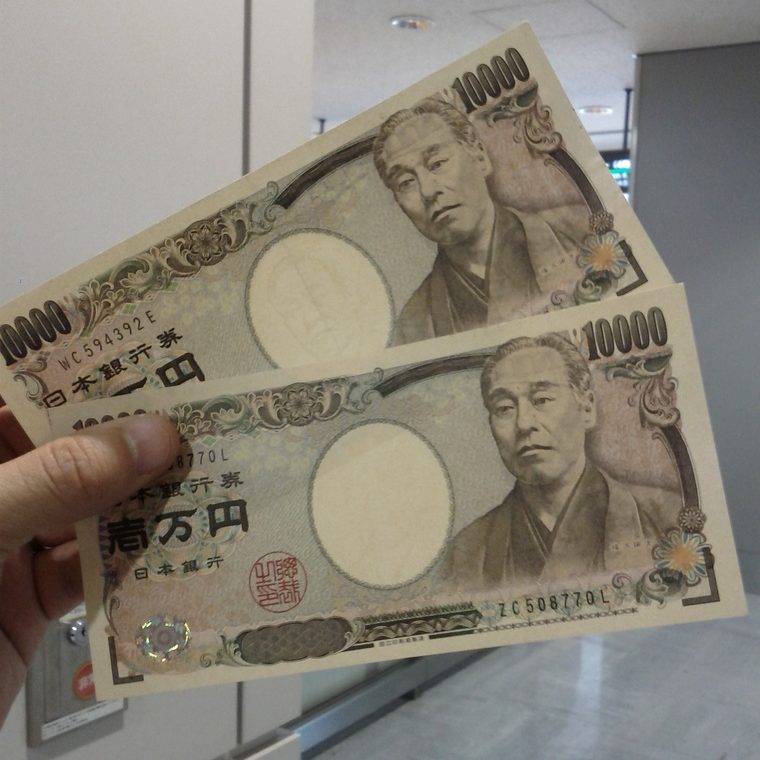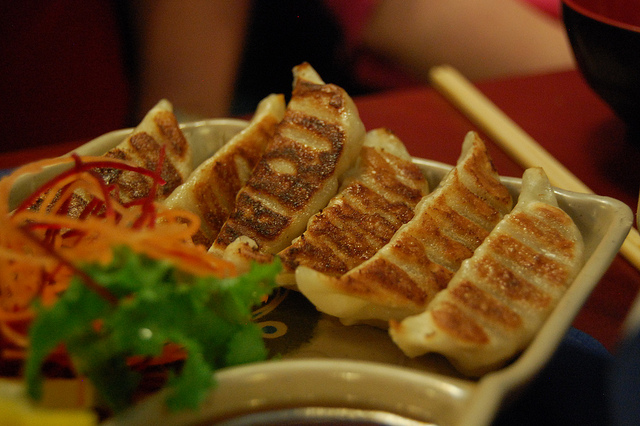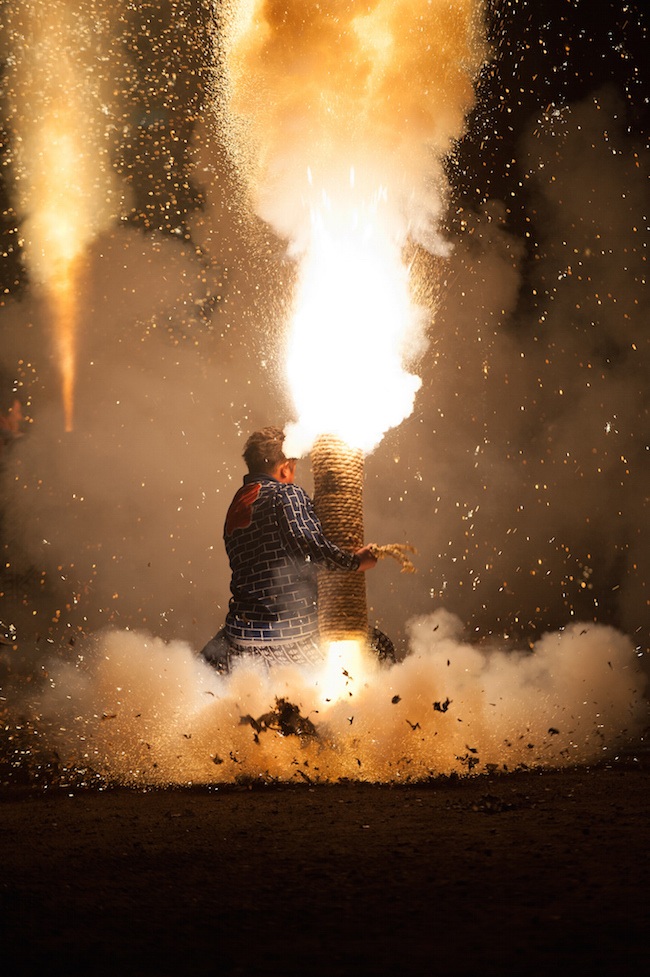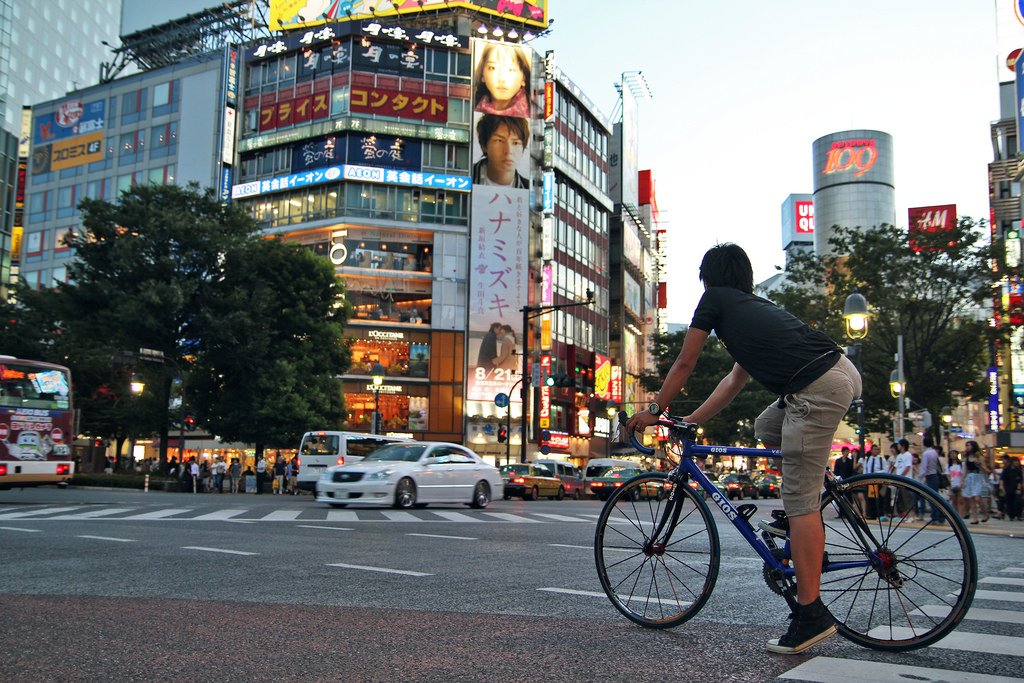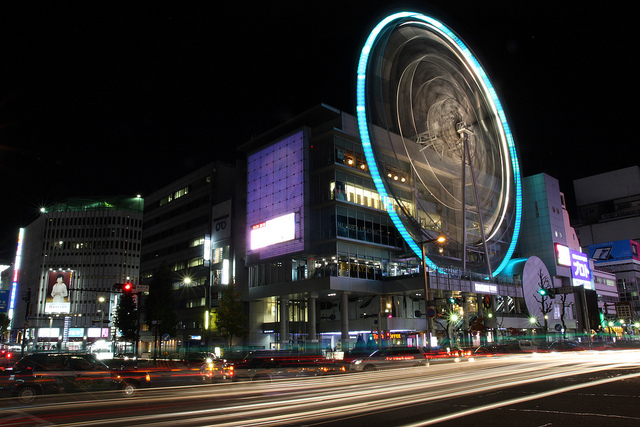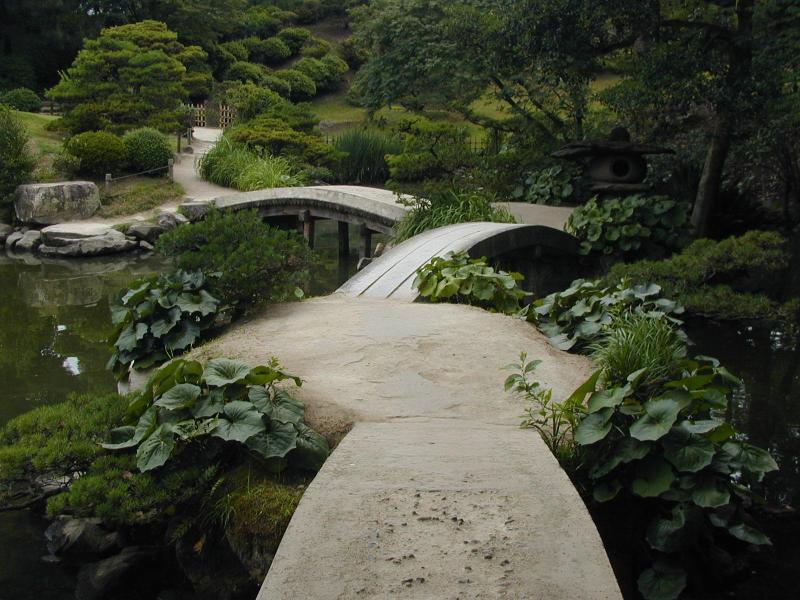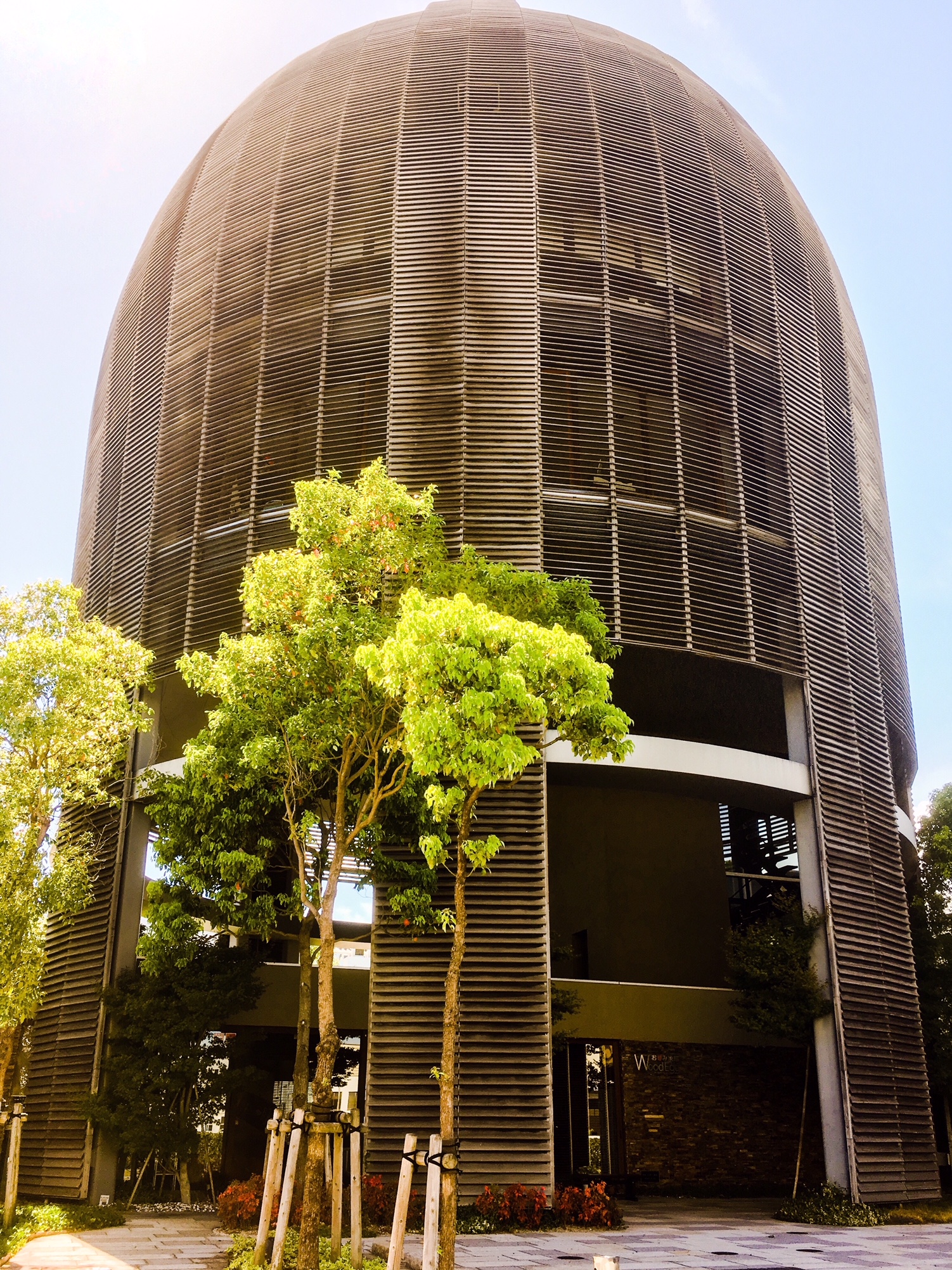Aug 31, 2018
Nagoya Comedy: Served up Monthly

Looking for funny? Well, you are in luck, because “Nagoya Comedy” brings you funny in all senses of the word. Nagoya, Japan’s own (and only) English language stand-up comedy troupe holds regular live stand-up shows throughout central Japan featuring a cavalcade of funny; funny looking, funny thinking, and just plain “funny ha ha” local comedians who will shock and awe(ful!?) your evening, and leave you in stitches. You can also check out their weekly podcast “Talk Funny” – available on iTunes, Spreaker and more. New episodes every Friday morning (Japan Time).
For information on Nagoya Comedy
www.facebook.com/nagoyacomedy
nagoyacomedy(at)gmail.com
http://nagoyacomedy.com
Twitter: @NagoyaComedy
Nagoya Comedy: Nagoya Comedy 3rd Anniversary Standup Show
 Nagoya’s hardest writing comics celebrate over three years of live shows and bring their best material and new hits as well. Delirious comedy, an Open Mic contest, and Magic! Get your tickets now by contacting any of the performers. Join the stars of the Talk Funny Podcast and the hardest writing comedians in Japan at GC Live. Featuring Emcee Mark Bailey, Steve Howard, Tim Lennane, Mike Miller and the magic of Joe Hindman.
Nagoya’s hardest writing comics celebrate over three years of live shows and bring their best material and new hits as well. Delirious comedy, an Open Mic contest, and Magic! Get your tickets now by contacting any of the performers. Join the stars of the Talk Funny Podcast and the hardest writing comedians in Japan at GC Live. Featuring Emcee Mark Bailey, Steve Howard, Tim Lennane, Mike Miller and the magic of Joe Hindman.
1,500 yen at the door, 1,000 yen advance tickets, one drink minimum, open mic available to paid audience members at the start of the show. Sign up at the door. Open mic-ers, please pre-time your sets to less than 5 minutes. We will have the first four open mics to sign up on stage called at random order, so get there early. Winner of the Open Mic Contest as determined by crowd applause will get a prize of a free beverage of his/her/zie choice.
3rd Anniversary Standup Show
September 21, 2018
9 – 11 pm. Doors open 8:30 pm.
Venue: GC Live
1 Chome-10-30 Shinsakae, Naka Ward, Nagoya, Aichi Prefecture (map link)
090-9123-1203
www.gclivenagoya.com
Aug 31, 2018
Let’s Tour: Kawagoe City; Little Edo
 Located about 60 minutes by train northwest of central Tokyo is the city of Kawagoe in Saitama Prefecture. Because of its location in the Greater Tokyo area, it’s mainly considered just another “bedtown”; Japanese borrowed English slang for a bedroom community. But its current day suburban moniker can be easily peeled away to show Kawagoe’s long rich history that lies in its origins. In the center of Kawagoe you will find a well-preserved collection of century-old warehouses still used as stores, workshops and homes, that immediately bring up thoughts of “the way things used to be;” specifically the way they were during the early Showa period and even sometimes a bit earlier. You only have to wander over to the historical districts north of Hon-Kawagoe station and find not only one of the last collection of historically preserved buildings in the Metropolis but also many museums and shops dedicated to the task of showing off old Japanese traditions and life.
Located about 60 minutes by train northwest of central Tokyo is the city of Kawagoe in Saitama Prefecture. Because of its location in the Greater Tokyo area, it’s mainly considered just another “bedtown”; Japanese borrowed English slang for a bedroom community. But its current day suburban moniker can be easily peeled away to show Kawagoe’s long rich history that lies in its origins. In the center of Kawagoe you will find a well-preserved collection of century-old warehouses still used as stores, workshops and homes, that immediately bring up thoughts of “the way things used to be;” specifically the way they were during the early Showa period and even sometimes a bit earlier. You only have to wander over to the historical districts north of Hon-Kawagoe station and find not only one of the last collection of historically preserved buildings in the Metropolis but also many museums and shops dedicated to the task of showing off old Japanese traditions and life.
 Get the low-down at the museum
Get the low-down at the museum
In order to learn more about the area, head over to the Kawagoe City Museum and gain an overview of how a samurai saddled with the burdensome sparsely inhabited lands was able to bootstrap the area into prosperity by turning it into a silk weaving boomtown. The journey doesn’t begin there though as there is a large collection stemming back from the Yayoi and Kofun periods in early Japanese history. You’ll also learn how people were able to rebuild the town after an enormous blaze burnt down almost every building standing in the then small village. There are English speaking volunteers available to help explain the finer points if needed.
Kawagoe City Museum, 2-30-1 Kuruwamachi, Kawagoe 350-0053, Saitama Prefecture
 Seeking a higher power
Seeking a higher power
Back in the feudal days, nothing could be done without the will of the gods above and rulers of the lands; Kawagoe was home to several strong temples, shrines, and lords. The oldest shrine, Miyoshino Jinja was established in the year 807! It is located on the grounds of what used to be Kawagoe Castle which doesn’t exist anymore but Honmaru Palace is still there and can be accessed. Kita-in also can be found nearby. This was the main Buddhist temple in the Kawagoe domain, and the building itself was once part of Edo Castle. Don’t miss the 540 statues of Rakan inside, all representing the original disciples of Buddha.
 A stroll through the neighborhood
A stroll through the neighborhood
Head over towards the “Warehousing Street” historical area and you’ll find a whole district full of “kurazukuri” warehouses and old storefronts that are part of a designated historical site. These are no mere display units though; every one of them is still in use as a storehouse, small workshops or store, and you are very encouraged to visit and drop some hard yen on whatever may tickle your fancy. If you hang out in the area long enough, you will hear the bell toll from Toki no Kane, the old bell tower that is also the symbol of the city of Kawagoe. It rings out 4 times a day (6 am, 12 pm, 3 pm, and 6 pm)
Kawagoe Castle
 Kawagoe Castle is the closest castle to Tokyo still accessible to visitors. Edo Castle, while much closer, is now known as the Imperial palace. While you can stroll the grounds of the Palace a bit, it is largely all off limits to the public; making Kawagoe Castle sort of the only game in town.
Kawagoe Castle is the closest castle to Tokyo still accessible to visitors. Edo Castle, while much closer, is now known as the Imperial palace. While you can stroll the grounds of the Palace a bit, it is largely all off limits to the public; making Kawagoe Castle sort of the only game in town.
The castle was deeply involved in the wars of the 15th-16th centuries, where the castle’s position on the road to Echigo province to the west, on the Sumida River and near the Edo River were instrumental in defending Kantō from attack. Notable among these battles was the The Siege of Kawagoe Castle; a failed attempt by a clan to regain Kawagoe Castle from the Late Hōjō clan in 1545-1546.
Unfortunately, the castle was largely dismantled starting from 1870, and its various components were either moved or built over by the growing city. Small portions of the castle have been retained, and these portions are worth a visit if you are in the area. These locations, including a mound where a tower on the wall once stood, and the primary hall , Honmaru Goten, remain on the original site, which was designated a “Tangible Cultural Property of Japan” in 1967.
http://museum.city.kawagoe.saitama.jp/hommaru/
For more information and access:
Visit the Kawagoe City tourism homepage where a detailed guide to all the area’s attractions can be found.
http://www.koedo.or.jp/foreign/english/
Three train companies have stations in the area:
- Kawagoe Station – JR Kawagoe line and Tobu Tojo Line [TJ21]
- Hon-Kawagoe Station – Seibu Shinjuku Line [SS29]
There’s also the Kawagoe Hikawa Festival in October, one of the biggest and oldest traditional matsuri festivals in Japan and a great time to visit the area.
— By Jason L. Gatewood
Images courtesy Kawagoe City Tourist Office, Saitama Tourism Office,
KawagoeTowerCommons” by user:Fg2 – Own work. Licensed under Public domain via Wikimedia Commons (modified)
Alley in Kawagoe” by Collin Grady CC BY-SA 2.0 via Wikimedia Commons (modified)
Aug 30, 2018
An Art Museum for the Digital Age: Mori Building Digital Art Museum

When most people think of art and Japan in the same vein, images on the order of Hokusai’s Great Wave of Kanagawa spring to mind. You could tour the traditional art scene in Nippon seemingly forever, enjoying a multitude of museums throughout the metropolis. However, only one is dedicated to interactive digital arts, and that is the Mori Building Digital Art Museum.
The new concept, created by digital art collective teamLab, opened next to the Pallette Town building in Odaiba in January and features 470 projectors shining bright CGI graphics streaming from a data center’s worth of computers, onto reflective surfaces that patrons can interact with in many ways. The Mori Building group has utilized teamLab’s services before; if you’re feeling a bit of deja vu; a stroll around Roppongi Hills or Toranomon Hills should help jog your memory a bit.
The exhibits themselves are interactive and ever-changing suites of light and sound; no two people will experience them in the same way, and that’s a good thing. Whether a virtual bouldering course that alters the light shower as you “climb,” or an incline that allows you (and the kids… especially the kids) to power slide through a virtual pool of fruit and colors, this is a very hands-on affair.
As you move throughout the complex, each exhibit melds into the next, and at times the interactions seemed to follow me. This is not by accident, as the works are designed to integrate and interact both with one another, and the patrons moving in the space. The primary goal of the exhibit is to attempt to unify the digital and biological world and explore those new connections.

While grownups contemplate the deep philosophical ideas behind every piece, the children will be bouncing, running, and crawling the walls while exploring every nook and cranny of the halls. There is even space designed to encourage to sitting down with a cup of tea where virtual flowers will bloom, creating the perfect atmosphere to connect and share the experience with another.
The proximity of the new museum to 2020 Tokyo Olympic venues on Odaiba island isn’t a coincidence, but officials say this is a permanent exhibition and plans for a new installation in the space after the Games are long gone are already underway.
Getting there
MORI Building Digital Art Museum: EPSON teamLab Borderless
1-3-8 Aomi, Kōtō-ku, Tōkyō-to 135-0064
03-6406-3949
Tokyo Waterfront Railway Rinkai Line to Tokyo Teleport Station [R04] or Yurikamome Line to Aomi Station [U10]
http://borderless.teamlab.art
Admission fees
Adult (aged 15 and over)
¥3,200
Child (ages between 4-14)
¥1,000
(Children below age 3 and under are free.)
Purchase tickets and check availability by visiting http://ticket.teamlab.art.
— By Jason L. Gatewood
Images: courtesy teamLab
Exhibition view of MORI Building DIGITAL ART MUSEUM: teamLab Borderless 2018, Odaiba, Tokyo
©️ teamLab
Aug 30, 2018
Banking in Japan: ATMs Decreasing, ATM Fees Increasing

As Japan adjusts both technologically and demographically to cater to both citizens and visitors alike, the banking industry is also in a state of adjustment.
The broad acceptance of available tech that makes it easy to pay without real money and a public savvy to mobile payments both inside and outside of Japan is encouraging banks to decrease the number of cash machines and raise fees for withdrawing cash from the remaining devices.
One other likely reason for this new trend is the fact that Japan’s working population is shrinking and the numbers of techs and money couriers to service the multitude of machines across the land is stagnant as well, driving up the backend maintenance costs. So what does this mean to us as expat residents of Japan and how can we sidestep the fees?
Debit it
 As I have stated in earlier articles, many of Japan’s banks have finally jumped on the debit card bandwagon. Find out if your bank offers a branded debit card (those that are welcome wherever Visa, MasterCard, and JCB are) and get one. Many banks are starting to abolish fees associated with having one of these cards, raising ATM withdrawal fees, both on and off-network instead.
As I have stated in earlier articles, many of Japan’s banks have finally jumped on the debit card bandwagon. Find out if your bank offers a branded debit card (those that are welcome wherever Visa, MasterCard, and JCB are) and get one. Many banks are starting to abolish fees associated with having one of these cards, raising ATM withdrawal fees, both on and off-network instead.
The good news is many more places accept credit and debit cards now than ever before in Japan, including most convenience and grocery stores, Starbucks and McDonald’s (I remember the dark days when not even they would accept cards). If you are in the market for a different bank for this, I wholly recommend 7Bank, for reasons found in this earlier article.
Limit Training
Many the banks that are imposing fees now are still allowing a certain number of transactions to be “fee free” or are not charging fees to those that keep a significant amount of yen in the bank. Shinsei Bank, long the go-to bank for expats is utilizing this strategy as it has gotten rid of its ATMs and partnered with every convenience store ATM network in Japan.
I will miss the days of scot-free ATM transactions anywhere with these guys, but they do offer a Visa-branded debit card you can set to auto charge from your account to avoid the cash machine. For those times you do need cold hard yen, make sure you take more than enough out, so you can limit your trips.
Appification of JPY

Many banks now have smartphone apps that keep track of your spending, initiate transfers and so forth, even in English! Take advantage of these, and also that other elephant in the room: mobile e-money.
LINE Pay and Mobile Suica are available in many places as well as Edy/Rakuten Pay and QuikPay. These work in conjunction with Apple Pay and Google Pay as well. I use all of these in some form in my daily life here in Tokyo and have not needed an ATM except at the local produce market or izakaya in my neighborhood. You can even pay TEPCO power bills through LINE Pay now, so expect this trend to only increase.
I’m Stayin’ Online
Of course, the easiest way to avoid a lot of the hassle with cashola is to buy almost everything online. Nearly every store in Japan has an online component, and there are ways to get things delivered even if they don’t have service in-house. Even the small in-your-neighborhood shops will likely take a bank “Furikomi 振込“ transfer for their regular customers — If you’ve ever wondered why so many people in at the ATM corners in Japan look like they’re reprogramming the thing, this is why; ATMs are traditionally where monthly payments to landlords, insurance, and utilities are made.
Many banks have taken this step online in their apps and websites as well. With Rakuten Bank, you can send a payment via email. The receiver will be directed to a secured form where they enter their bank account information to receive the payment; all without having to remember how to “katakana-ize“ their name or which branch of whatever bank they have an account at.
This list is by no means exhaustive, and I’m always on the lookout for more tips to help everyone “Japan better”; if you have one you want to share, drop a comment below or shout out to me through social media.
— By Jason L. Gatewood
Images:
“20000 yen” (CC BY-NC 2.0) by mrjoro
“ATM” (CC BY-NC 2.0) by chocogato
Aug 29, 2018
All Japan Gyoza Festival at Nagakute’s Moricoro Park
Much like ramen, gyoza is a dish with Chinese origins that the Japanese have taken to their hearts. Typically filled with ground pork, chives, green onion, cabbage, ginger, garlic, soy sauce and sesame oil, these little dumplings can be fried or boiled, but are almost always delicious, not to mention incredibly moreish.
However, as well as the traditional way of making gyoza, many restaurants have come up with innovative and fabulous recipes, and the best and brightest will be gathering in Nagoya to compete for the crown of the gyoza king or queen.
All Japan Gyoza Festival
The All Japan Gourmet Festival is a staple of the Golden Week attractions at Nagakute’s Moricoro Park with over 100,000 visitors every year, but this year it is branching out into Silver Week for a gyoza themed special.
The event aims to continue the reputation of gyoza’s rise from that of a salaryman’s staple to that which everyone can enjoy. From the 15th to the 17th of September, competitors from across the country will come together in the hope of winning the event.
What this means is that throughout the park, from the deep-fried gyoza of Mie Prefecture to the black ink pork gyoza from Kagoshima, or the happy gyoza from Bhutan, there are over two dozen amazing dishes for you to sample, as you step from counter to counter, filling yourself on the delicious dumplings (and you will, I did mention that they are very moreish).
If you are new to the gyoza game, it is best to head for any stalls from Utsunomiya and Hamamatsu, Tokai region’s moist famed gyoza capitals. However, pretty much anywhere you try is likely to be mouthwatering as these guys are the brightest and best in Japan’s gyoza world.
- Where: Moricoro park, Nagakute-shi, (map)
- When: 15 – 17 September 2018
- Admission: 500 JPY
- Website: gyozamatsuri.jp
Gyoza in Nagoya
If you can’t make it out there, but you still have a craving for gyoza, the festival is not the only place to get it in Nagoya. Here is a handful of some of Nagoya’s best.
Gyoza no Osho
You can find this restaurant chain from Osaka all around Nagoya, and with ‘gyoza’ in the name, it should be good. And it is.
Cheap, cheerful, and always bustling, the gyoza here is of the classic, standard variety, and you can’t go wrong.
- Where: All over the city
- Website: www.ohsho.co.jp
Misen
Taiwanese in theme, Misen is a Nagoya institution. You perhaps know it for its spicy Taiwan ramen, but no self-respecting Nagoyan would tackle a bowl of the ramen without the gyoza on the side.
Perhaps one of the most morish gyozas in the city.
- Where: Imaike, Meieki, Yaba-cho, Nagoya Station
- Website: misen.ne.jp
Zhumulangma
Named after the Tibetan word for Mt. Everest, Zhumulangma (or Chomoranma in Japanese) hits the heights of gyoza experimentation.
They have a huge selection, but perhaps the best is either the niku niku (double meat) gyoza or the refreshing pakuchi (cilantro) gyoza, both of which are out of this world.
- Where: 3 Chome-11-16 Meieki, Nakamura-ku (map)
- Website: hotpepper.jp
Hyakuroutei
If you want a proper, classic gyoza experience, Hyakuroutei in Osu is the place to go. Here there are four different ways that you can enjoy the delightful dumplings: pan-fried, in water, in egg soup, and in a soup made from the water in which the gyoza was cooked.
- Where: 2-13-13 Osu Naka-ku (map)
- Website: tabelog.com
Karitto Gyoza
Having been in the business for over 40 years, Karitto Gyoza does things a little bit differently.
Here the speciality is large fried gyoza balls that are ‘kari-kari-mochi-mochi’ (roughly meaning crispy but soft and chewy). You don’t get gyoza like this anywhere else.
- Where: 43-1 Aichicho, Nakagawa-ku (map)
- Website: karittogyoza-kogane.com
Mark Guthrie
Photo: by stu_spivack (CC BY-SA 2.0) via flickr.com
Photo: by verygreen (CC BY-SA 2.0) via flickr.com
Aug 29, 2018
Toyohashi Fire Festival: Things are about to go off!
While there are many, many fireworks festivals in Japan throughout the summer months, there are very few that match Toyohashi’s Hono-no-Saiten for sheer spectacle. And danger.
About Hono-no-Saiten
The Hono-no-Saiten festival started in 1996 to commemorate the 90th anniversary of the founding of Toyohashi City and has been an annual event ever since. It’s not difficult to see why.
While much of the festival throughout the day is similar to other festivals – with yatai stalls selling food, kids running around with toy guns and elderly men drinking more sake than they can probably handle, it is when the night falls that things start to brighten up, quite literally.
The Mikawa area, and Toyohashi, in particular, is well known for its ‘tezutsu hanabi,’ hand-held, handmade fireworks, which are exactly as dangerous as that sounds.
Crafted from 80cm bamboo tubes stuffed with three kilograms of old-fashioned gunpowder, the tezutsu hanabi are thought to have originated as a tool for battlefield and inter-castle communication some 450 years ago. They are rarely seen outside of the Mikaya Bay area, however, at Hono-no-Saiten they are put to use for our entertainment.
Here you will see troupes of locals, 25 at a time, dressed in traditional clothing including unique thickly woven fireproof cotton quilted jackets, clutching these battleground tools under their arms. Once set, and the taiko drums reach their crescendo, they brace themselves as the gunpowder goes off, sending a fountain of sparks and smoke ten meters into the air, as the burning embers rain down on the brave (or perhaps foolhardy) holders below.
The conclusion of the event is signified by a more modern fireworks display, one that may be more visually spectacular, but lacking the inherent danger and cultural importance, it doesn’t quite compete with the sheer visceral thrill of the tetzusu hanabi.
For the kids
As well as the regular festival stalls at which your children can catch fish and win toys, there are also handicraft workshops will teach kids to make small tezutsu (minus the gunpowder, of course).
Hono-no-Saiten Details
- Where: Imahashi-cho, Toyohashi-City (map)
- When: September 8, 2018
- Website: www.honokuni.or.jp
Mark Guthrie
Photo: by Kuraken (CC BY-SA 2.0) via flickr.com
Photo: by Koji Ishii (CC BY-SA 2.0) via flickr.com
Aug 28, 2018
Bicycle Liability Insurance

There are two major cities in Japan that require bicycle riders to maintain liability insurance as a condition for riding in the city. These are:
- Osaka City
- Nagoya City
Clients and readers living or visiting these areas must be aware of this responsibility before hitting the road, but everyone should consider getting some level of protection as judgement against the unexpected and unfortunate.
What is bicycle liability insurance?
Bicycle liability insurance is a form of personal liability insurance that covers costs if you injure someone or damage their property while riding your bicycle. Liability doesn’t cover any damage to yourself or your bike, regardless of who is found responsible for the accident.
Do you have personal liability insurance?
If you have another form of insurance, it may (or may not) come with, or offer access to add on provisions, that provide “personal liability insurance” that may satisfy the requirement for bicycle liability insurance coverage. Personal liability insurance compensates liability incurred in many everyday situations, including while riding a bicycle.
(Please note that anyone who purchased housing insurance from this blog’s parent company, The H&R Group [ Japan Home Search, Relo Japan, etc] has personal liability insurance included, standard).
Some examples of relevant policies:
- Car insurance with an additional personal liability insurance policy
- Fire Insurance with an additional personal liability insurance policy
- Accident Insurance with an additional personal liability insurance policy
- Mutual Insurance such as Zenrosai or Shimin Kyosai
- Group Insurance such as Company Insurance, PTA Insurance, or School Insurance
- Credit Insurance with additional personal liability insurance protections
- Expansive Insurance for General Student Life (Futaigakuso)
- Personal Liability Insurance for Students (Gakubai)
(List from www.generalunion.com)
Do you have TS Mark incidental insurance?
 The “TS Mark” have been placed on your bicycle at a bicycle shop when you purchase a bicycle or have an inspection and maintenance carried out on your bicycle. The TS Mark includes accident insurance and liability insurance and is valid for one year from the date the bicycle is inspected. The “TS” in “TS mark” is an acronym for “Traffic Safety.”
The “TS Mark” have been placed on your bicycle at a bicycle shop when you purchase a bicycle or have an inspection and maintenance carried out on your bicycle. The TS Mark includes accident insurance and liability insurance and is valid for one year from the date the bicycle is inspected. The “TS” in “TS mark” is an acronym for “Traffic Safety.”
(From Nagoya International Center)
Don’t have any of the above?
If you do not have “personal liability insurance” or A “TS Mark” you will need to get bicycle liability insurance. You can get this from most insurance companies, but here are two options to look at immediately.
7/11 Bicycle Insurance (Mitsui Sumitomo)
You can sign up for this insurance online, but you will need to visit a 7/11 convenience store and use its “Multi Copy” multi-purpose photocopier to complete the signup. It generates a pay slip that you take to the cash register. After paying you get a slip with an “insatsu bango” (printing number) that you then enter into the machine again to print out a contract for your records. You will also receive the contract in the mail from the insurance company (Mitsui Sumitomo) a few weeks later.
http://jitensya.ehokenstore.com
(From www.tokyointernationalcyclists.com)
AU Sonpo Bicycle Insurance
You can sign up for this online. www.au-sonpo.co.jp/pc/byclebest/index.html
Reference to any business or organization is provided for informational purposes only and does not constitute an official endorsement by the H&R Group
Aug 28, 2018
Do You Know Nags? Nagoya’s Hidden Gems

Whether you have been here for a few weeks or know the city like the back of your hand, Nagoya is a city that is full of surprises. New restaurants and bars pop up all the time, and you can be strolling down a familiar street and suddenly notice a temple you’ve never seen before.
We all have our favorites, our haunts, our places of sanctuary. In this new JIS series, Nagoya residents share their recommendations, so that you can get to know this amazing, beautiful, eclectic city as well as they do.
Who? Kosuke Watanabe
Recommendation? Shirotori Garden

Despite having returned to his native California last year, Kousuke recalls his four and a half years in Nagoya fondly. One place, in particular, is Shirotori Garden.
“I discovered it the first summer I lived in Nagoya,” Kosuke says. “It’s just a nice somewhat-hidden gem where you can peacefully enjoy a walk around the garden, feed the koi carp, and have some green tea or shaved ice in the tea house. It’s also pretty good for any Pokemon Go! people out there.”
Where: 2-5 Atsuta Nishimachi, Atsuta Ward (map)
Website: shirotori-garden.jp
Who? Edy Furutani
Recommendation? Barbecue at Shonai Park
Edy has lived in Japan for almost two decades and in Nagoya since 2007. There’s a good chance that you know Edy. Everyone knows Edy! He’s spent a lot of time working in almost every bar in Nagoya, was a promoter/barman at Red Rock and is now the proud owner of Mybar in Sakae.
Edy is also one of the guys responsible for the Brazilian BBQs that pop up every summer, and for him, there is only one destination. “It’s got to be Shonai. Not only is it a big and beautiful park, but there’s a really fun, family vibe going on.”
Where: Shikichi- 3 5 2 7 Yamadacho Oaza Kamiotai, Nishi-ku (map)
Website: www.nga.or.jp
Who? Terry Taudigani
Recommendation? Slow Camp Hair
 Terry lived in Nagoya for three years, and as a man known for his style, finding the right barber was important. Fortunately, he found it in Slow Camp Hair.
Terry lived in Nagoya for three years, and as a man known for his style, finding the right barber was important. Fortunately, he found it in Slow Camp Hair.
“Slow Camp in Fujigaoka is owned and operated by a bloke named Yogo. He’s incredibly meticulous and passionate about what he does,” Terry explains. “He’s friendly, full of information in regards to what’s happening in and around town, speaks English and is always up for a good yarn. To give you an idea of how good this guy is, I lived in Nagoya for three years but he’s been my hairdresser for five.”
Where: 8-4 Takaragaoka, Meito Ward (map)
Website: hotpepper.jp
Who? Rangi Thompson McColl
Recommendation? Nittaiji Temple
 Being one of the main guys behind NAGMAG, Rangi should know a thing or two about this city. He has been here since he was a teenager and says that there are many great spots in Nagoya, but one of his favorites is Nittaiji Temple, built to commemorate friendship between Japan (Ni) and Thailand (Tai).
Being one of the main guys behind NAGMAG, Rangi should know a thing or two about this city. He has been here since he was a teenager and says that there are many great spots in Nagoya, but one of his favorites is Nittaiji Temple, built to commemorate friendship between Japan (Ni) and Thailand (Tai).
“Built in 1904, I think it’s better than Kyoto because it’s a real functioning temple, there are way fewer tourists, and there is an actual bit of the Buddha enshrined there. Also just down the road is Yokiso Park with a Meiji-era house in which you can look around. But the real attraction is the grounds – a traditional and relaxing Japanese garden.”
Where: 1-1, Hoo-cho, Chikusa-ward (map)
Website: nittaiji.jp
Mark Guthrie
Photo: flickr.com “Sakae, Nagoya” by yeowatzup (CC BY-SA 2.0)
Image by: Kousuke Watanabe (own work)
Image by: https://beauty.hotpepper.jp/slnH000316876/
Photo: by yeowatzup (CC BY-SA 2.0) via flickr.com
Aug 28, 2018
Full Moon Tea Ceremony at Shukkei-en in Hiroshima

Tsukimi, or Moon Viewing, is a Japanese tradition going back to the Heian period, when portions of the old Chinese mid-Autumn festivals blended with local practices to create one more reason for the aristocracy of Kyoto to stay up all night. The classic portrayal of the Heian Moon Viewing Party includes courtesans reclining in small boats, composing poetry on the rippling reflection of the full harvest moon as their fingers trailed through the water.
Well, we may not be able to offer you that in Hiroshima, but in Shukkei-en garden you can come quite close. The festival’s date changes from year to year, of course, depending on when the moon is full. In 2018, it comes quite early, in the last week of September.
Shukkei-en is a perfect setting for the kangetsusai (another name for a moon viewing tea party). The formal garden setting, built around a large pond overlooked by three teahouses and spanned by an arching stone bridge, seems designed with such things in mind.
On Monday, September 24, there will be tea ceremony events held at several places in Shukkei-en. This is a popular event, which means it will be more lively than some other tea events you may have attended in the past. It affords an excellent chance to see the Shinto displays laid out in celebration of the harvest moon, to see tea practitioners in traditional dress, and to drink tea yourself as you watch the full moon rise over the pond. Tents will be opened for the serving of tea on the lawn adjacent to the art museum, and of course, there will ceremonies as well in the Seifukan tea house.
The tea events will begin at around 15:00. The sun won’t set for another three hours after that, though, so if you want to enjoy the evening night view, come later or plan to linger in the garden. There are certainly worse ways to spend a Monday night. The tea events will come to a close at 20:00, though the garden itself will remain open until 21:00.
This should be a very pleasant, low key event. Children are, of course, welcome. Many families attend the kangetsusai, and children seem to enjoy the odd thrill of being outside at night with so many adults around enthusing over the moon and steaming cups of green tea.
As mentioned elsewhere, this will also be the final day for the Studio Ghibli Expo in the Prefectural Art Museum adjacent to the park. The museum will be open until 20:00 on the final day, so it may be a good day to buy a combined museum and garden ticket and take in both.
Additional Information
Address: 2-11 Kaminobori-cho, Naka-ku Hiroshima-shi, Hiroshima-ken 730-0014
Time: September 24, 15:00 to 20:00
Access: Grounds of Shukkei-en Garden. A fifteen-minute walk north along Chuo-dori from the Hondori shopping arcade downtown, or take the northbound Hakushima spur of the Hiroden streetcar line, exiting at Shukkeien-mae stop.
Admission: Formal tea ceremony in the teahouse, 800 yen / tea in the garden, 600 yen
Telephone: +81-(0)82-221-3620
(WT-en) Jpatokal at English Wikivoyage [CC BY-SA 3.0 ], from Wikimedia Commons
Aug 28, 2018
WoodEgg Okonomiyaki Museum Hiroshima

I regularly meet people traveling through Hiroshima. And because my wife has suggested I be friendlier, I ask them what they’ve seen and enjoyed. Most of the answers are unsurprising, but recently a number of tourists have been especially enthusiastic about the WoodEgg Okonomiyaki Museum.
The WoodEgg (yes, one word) is in Sho-ko Center, an industrial district west of downtown. The museum gets its name from the shape of the building, which was completed in 2008 and is, in fact, reminiscent of a very large wooden egg stood on its end. The museum is run by the Otafuku Sauce Company, whose best-selling okonomiyaki sauce (more than 50 ingredients!) is available worldwide.
A quick word about the company. Initially a manufacturer of soy sauce and vinegar, it launched its famous sauce in 1952 to top okonomiyaki, a filling and inexpensive dish that became emblematic of Hiroshima in the years immediately following the second world war. The name comes from Otafuku, a folk character recognized throughout Japan for her fat-cheeked, white face and narrow, laughing eyes. With her tiny, bow lips turned up in a smile, one story is that the character is modeled on a young shrine maiden of the Muromachi period whose homely, charming features could change the heart of the most hardened villain.
Her image was adopted by the sauce to convey a cheery, comfortable image in keeping with the dish. There are other similar sauces on the market, but Otafuku is the most popular and offers assistance to people opening new okonomiyaki shops. Outside Japan, of course, the sauce has found its way into other dishes. Amazon reviewers in the U.S. seem to put it on everything from scrambled eggs to sandwiches.
For the foodie sort of traveler, the main draw of the WoodEgg museum, aside from the building itself, is the sheer range of the tour. Most visitors to Hiroshima end up trying okonomiyaki. Here, you’ll learn to make it yourself. For a very modest price, you get a factory tour, a history lesson, a cooking class, and meal, and finally go home with a souvenir photo and a warm bottle of sauce fresh from the line. The museum, factory tour and a lecture on the history of okonomiyaki are all free.
If you choose to add the cooking experience, it’s 700 yen for the electric griddles (available for groups of up to 20) or 1000 yen for the teppan grill (for groups up to 50). With some luck, or advance notice, English speaking guides are available, and most of the museum’s staff can manage at least some English. A number of visitors have spoken glowingly of how the museum and lecture, in particular, tie the history of okonomiyaki to the story of Hiroshima’s post-war recovery, making the trip every bit as cultural an experience as another shrine visit.
If you’re traveling, it may be easiest to ask your hotel or Hiroshima Station information staff to make a reservation for you and arrange a taxi. The museum is about 15 minutes from the city center. If you’re especially keen, you might allow as much as a half-day for the full experience, from museum and lecture to factory tour to cooking and eating your own meal.
Definitely worth a trip, especially for people with a love for food and/or cultural history.
Additional Information
Address: 733-0833 7-4-5, Sho-ko center, Nishi-ku, Hiroshima, Hiroshima
Hours: 9:00~17:00 on weekdays. Closed weekends, national holidays, New Year holidays, O-Bon festival, and October 1st. Call ahead, especially around New Year and O-Bon in August.
Access: From Hiroshima station to Shin-Inokuchi Station … 15 minutes on JR to Shin-Inokuchi Station
From JR Shin-Inokuchi Station … 5 minutes by taxi, 8 minutes by bus. You can also take the red line Hiroden streetcar from Shin-Inokuchi to Inokuchi Station, getting you close enough to reach the museum with a five-minute walk.
Admission: Museum and Factory Tour: free, but reservations are needed for the factory tour. Okonomiyaki Cooking with teppan griddle: 1,000 yen / with electric griddle: 700 yen. Reservations required.
Telephone: +81-(0)82-277-7116
Website: http://www.otafukusauce.com/e/
Photo by author
